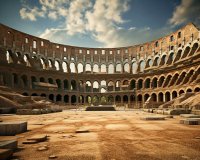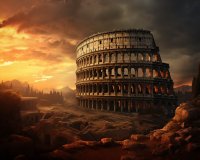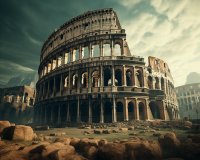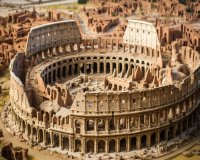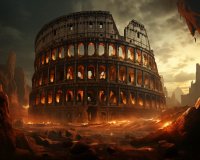Unveiling the Secrets of Ancient Rome
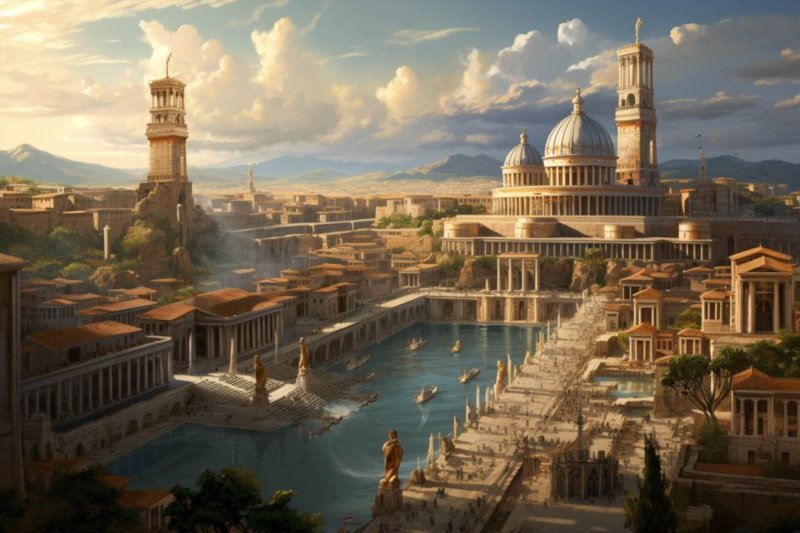
Unveiling the Secrets of Ancient Rome
Rome, the eternal city, is a treasure trove of history, art, and culture. Unveiling the secrets of ancient Rome takes us on a fascinating journey back in time, where the remnants of one of the greatest civilizations in human history come to life.
The Rise of Rome
Ancient Rome, founded in 753 BC, was a small Italian village that grew into a powerful empire spanning three continents. Its rise to prominence was marked by military conquests, innovative engineering, and a rich tapestry of myths and legends.
Architecture and Engineering Marvels
The Romans were pioneers in architecture and engineering. They built magnificent structures such as the Colosseum, a grand amphitheater where gladiators fought for their lives, and the Pantheon, a temple dedicated to the gods. The aqueducts, a marvel of engineering, provided Rome with a sophisticated water supply system, showcasing their ingenuity.
The Roman Gods and Beliefs
Roman mythology was a fundamental aspect of daily life. The Romans worshipped a plethora of gods and goddesses, each representing different aspects of life. Jupiter, the king of gods, Venus, the goddess of love, and Mars, the god of war, were just a few among the vast pantheon revered by the Romans.
Life in Ancient Rome
The daily life of an ancient Roman was a blend of luxury and hardship. While the wealthy indulged in lavish banquets, gladiator games, and elaborate baths, the commoners worked hard as farmers, merchants, and artisans. The Roman society was hierarchical, with slaves forming a significant part of the population.
The Legacy of Roman Law and Governance
One of Rome’s enduring contributions to the world is its legal system. The principles of Roman law, such as the concept of ‘innocent until proven guilty’ and the right to a fair trial, laid the foundation for modern legal systems. Additionally, the Roman Republic, with its system of checks and balances, influenced the development of democratic governance.
Literature, Language, and Philosophy
Roman literature and philosophy were heavily influenced by Greek counterparts. Great poets like Virgil and Ovid, renowned philosophers like Seneca, and orators like Cicero left behind a wealth of literary works that continue to be studied and admired today. Latin, the language of the Romans, evolved into the Romance languages spoken in various parts of the world.
The Fall of the Roman Empire
Despite its grandeur, the Roman Empire eventually faced internal and external challenges, leading to its decline and fall in 476 AD. Factors such as economic instability, invasions by barbarian tribes, and political corruption weakened the empire, ultimately bringing an end to ancient Rome.
Preserving the Past
Today, the ruins of ancient Rome stand as a testament to the ingenuity and creativity of this remarkable civilization. Preservation efforts ensure that future generations can continue to unveil the secrets of ancient Rome, marvel at its achievements, and learn from its mistakes.
In conclusion, the legacy of ancient Rome is imprinted on the pages of history and continues to shape the modern world. Its contributions in law, governance, architecture, and culture are woven into the fabric of human civilization, reminding us of the enduring impact of this extraordinary empire.
Rome: Explore Ancient Wonders with a Skip-the-Line Tour
Discover the rich history of Rome through a guided tour that takes you to iconic landmarks, including the Colosseum, Roman Forum, and Palatine Hill. With skip-the-line access, dive into the fascinating tales of emperors, gladiators, and ancient battles.
Highlights:
- Experience the awe of the Colosseum with an expert guide
- Save time with skip-the-line entry and priority access
- Explore the Roman Forum and Palatine Hill in depth
Embark on a journey through time as you tour the Colosseum's first and second levels, marveling at the architectural prowess that defines this ancient monument. Learn about the Arch of Titus, the burial site of Julius Caesar, and the birth of Rome amidst the ruins of the Roman Forum.
Continue to Palatine Hill, where the remnants of Imperial Palaces showcase the grandeur from which Emperors ruled the city. Your expert guide will paint vivid stories of Rome's legendary twins, Romulus and Remus, adding depth to your understanding of ancient Roman civilization.
Includes:
- Skip-the-line tickets to the Colosseum
- Professional tour guide
- Tour of the Roman Forum and Palatine Hill
- Access to the Colosseum underground
Immerse yourself in the history of Rome with a tour that promises not only insights into the past but also the convenience of skip-the-line access to these iconic sites.
Meeting Points and Languages:
The meeting point may vary based on the selected option. Tours are available in German, English, French, Italian, Portuguese, and Spanish.
Important Information:
- Bring a passport or ID card
- Wear comfortable shoes and carry water
- Prohibited items include weapons, sharp objects, large bags, and aerosols
- For children under 18, a government-issued ID/passport is mandatory
Book your spot now and pay later to ensure a seamless exploration of Rome's ancient wonders.
The Colosseum: Icon of Power and Glory in Rome
The Colosseum, also known as the Flavian Amphitheatre, stands as a testament to the grandeur of ancient Rome. This iconic structure, located in the heart of the eternal city, represents both power and glory, showcasing the architectural and engineering marvels of its time.
Constructed during the reign of the Flavian emperors, primarily under the leadership of Emperor Vespasian and his son Titus in the 1st century AD, the Colosseum was a symbol of Roman might and authority. Its completion marked a significant moment in Roman history, a tangible demonstration of the empire's capabilities.
Architectural Marvel
The Colosseum is a colossal amphitheater, with an elliptical shape that measures approximately 189 meters in length, 156 meters in width, and 50 meters in height. Its colossal size and innovative engineering made it a remarkable structure for its time. The amphitheater could accommodate an estimated 50,000 to 80,000 spectators who came to witness the various events hosted within its walls, such as gladiatorial contests, animal hunts, and mock naval battles.
The exterior of the Colosseum is a striking example of ancient Roman architecture. It features four levels, each adorned with a series of arches and columns. The outer façade showcases the use of concrete, travertine stone, and iron clamps. The Colosseum's design ingeniously supported the massive weight of the structure while providing open spaces for the public to enter and exit efficiently.
Gladiatorial Combat and Entertainment
One of the most famous aspects of the Colosseum was its role as a venue for gladiatorial combat. These brutal and often deadly battles pitted trained fighters, the gladiators, against each other or against wild animals. The bloodthirsty spectacle was not only a form of entertainment but also a means for emperors to display their power and cater to the desires of the Roman populace.
The Colosseum also hosted other events like chariot races and mock sea battles. The retractable awnings, known as the "velarium," could be deployed to provide shade to the spectators during hot Roman summers, enhancing their comfort during these events.
Historical Significance
Over the centuries, the Colosseum has undergone numerous changes and faced various challenges, including earthquakes, fires, and the removal of its decorative elements. However, it remains a symbol of Rome's historical significance and influence. In 1980, it was designated as a UNESCO World Heritage Site and stands as a vivid reminder of the architectural and engineering prowess of the ancient Romans.
Today, the Colosseum is a major tourist attraction and one of the most recognizable landmarks in the world. It serves as a window into the past, offering visitors the opportunity to explore the history and grandeur of ancient Rome. The site continues to inspire architects, historians, and enthusiasts from all walks of life.
Conclusion
The Colosseum, the "Icon of Power and Glory" in Rome, remains a striking testament to the ambitions and capabilities of the Roman Empire. Its imposing architecture, coupled with its role as a hub for entertainment and spectacle, makes it a symbol of Rome's influence and grandeur. As it endures the test of time, the Colosseum remains a source of inspiration and a living link to the glorious past of this eternal city.
The Roman Forum: Public Heart of Rome
The Roman Forum, also known as the Forum Romanum, is one of the most iconic and historically significant sites in Rome, Italy. This ancient archaeological treasure holds a special place in the hearts of both locals and tourists from around the world. It has been the center of political, social, and economic life in Rome for centuries, and its rich history is a testament to the enduring legacy of the Roman Empire.
Spanning over 2000 years of history, the Roman Forum has witnessed the rise and fall of emperors, the enactment of laws, the conduct of trials, and the gathering of citizens to discuss matters of state. It was truly the public heart of Rome, and its ruins today provide a glimpse into the grandeur of the past.
Historical Significance
The Roman Forum dates back to around 500 BC when it was initially a marketplace and a meeting place for the Roman people. Over time, it evolved into a complex of buildings and structures, each serving a unique purpose. Notable features of the Forum include the Temple of Saturn, the Temple of Vesta, the Arch of Septimius Severus, and the Curia Julia, which was the meeting place of the Roman Senate.
One of the most iconic structures within the Forum is the Arch of Titus, built in AD 81 to commemorate the sacking of Jerusalem. It is a remarkable example of Roman triumphal arches, showcasing intricate reliefs that depict the spoils of war, including the menorah from the Second Temple in Jerusalem. This arch remains a symbol of Rome's military achievements.
Architectural Marvels
The Roman Forum is a veritable treasure trove of ancient Roman architecture. The grand temples, basilicas, and arches exhibit the mastery of Roman engineering and design. The grandeur of these structures is truly awe-inspiring, and they provide valuable insights into the skill and vision of Roman architects and builders.
The Colosseum, one of the most iconic symbols of Rome, can be seen from the Roman Forum. This massive amphitheater, where gladiatorial contests and other public spectacles were held, is a testament to Roman engineering prowess and the desire to entertain and engage the public. It's a short walk from the Forum and a must-visit for any history enthusiast.
Decline and Rediscovery
As the Roman Empire declined, the Forum also fell into disuse and disrepair. Over the centuries, many of its structures were stripped for building materials, and it became buried under layers of soil and debris. It was only in the 18th and 19th centuries that efforts to excavate and restore the Forum began, leading to its rediscovery and recognition as an invaluable historical site.
Today, the Roman Forum is a UNESCO World Heritage Site, and it attracts millions of visitors every year who come to explore its ruins, admire its architectural marvels, and connect with the rich history of ancient Rome. The Forum is a window into the past, allowing us to walk in the footsteps of the great Roman leaders and citizens who shaped the course of history.
Visiting the Roman Forum
If you plan to visit the Roman Forum, it's advisable to allocate ample time for exploration. You can purchase a combined ticket that also grants access to the Colosseum and Palatine Hill, both of which are in close proximity. It's best to visit in the morning or late afternoon to avoid the crowds and the midday heat.
As you walk through the Forum, consider hiring a knowledgeable guide or using an audio guide to gain a deeper understanding of the historical and architectural significance of each structure. The Forum is a place to not only see but to experience the essence of ancient Rome.
Conclusion
The Roman Forum is a place where history comes alive, and its significance in the story of Rome cannot be overstated. It stands as a testament to the enduring legacy of one of the world's most powerful and influential civilizations. Visiting the Roman Forum is not just a sightseeing experience but a journey through time, allowing us to appreciate the rich heritage of the Eternal City.


